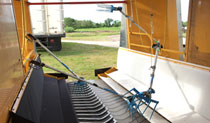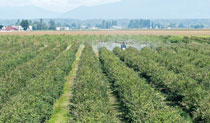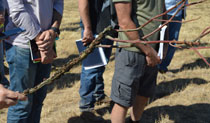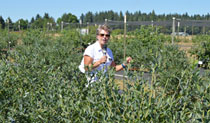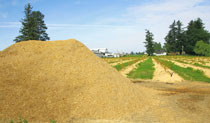Korean Shipping Season Proves Difficult; Vietnam, Philippines Access Promising
 |
Between what is known as actionable pest intercepts and mislabeling of clam shells, the Oregon blueberry industry’s experience in Korea this year was anything but smooth.
As most of you know, Oregon is the only state in the country that can export fresh blueberries to Korea. While this is a wonderful opportunity, there is no question that at times Korea has proven a difficult market.
This year was our most difficult to date.
We were able to sort through the pest intercepts and the mislabeling, but it wasn’t easy. We now are working with the Oregon Department of Agriculture to develop responses that will show Korea we are taking these issues seriously and are attempting to ensure this does not happen again.
By its very nature, the systems-based Korean program already is complicated. We are trying to not make it more complicated, but there may be some additional protocols coming our way for both packers and producers.
There is no question that it takes time and energy to meet the demands of this market, but it is a good program and a great market for our producers.
Speaking of the Korean market, I’m happy to report that it looks like we are in line to receive a USDA specialty crop grant of slightly more than $120,000 to conduct a market assessment of the Korean market and promote Oregon blueberries there.
The market assessment component of the grant, which is the largest component, will analyze market potential, challenges and opportunities. As part of the promotional component, the Oregon Blueberry Commission plans to work with the U.S. Highbush Blueberry Council on a coordinated effort to better understand how to promote fresh blueberries in the market.
We all watched as the Korean fresh market grew from a 500,000-pound market for Oregon producers to a 1.5-million-pound market. But that growth seems to have slipped recently. Part of the slippage we believe is caused by an increase in their domestic production, which does have some overlap with our fresh market. There are other forces are at play, as well.
We want to build that market as best we can before we have additional production areas, such as Washington and California, which are both working on market access, coming into the Korean arena, so we aren’t just divvying up the existing pie into smaller slivers.
Staying on market access efforts, we continued our efforts this year to gain access to the Vietnam and the Philippines fresh blueberry markets.
In April, in a cooperative trade mission with the Washington industry, we visited both countries, and representatives of both countries visited the Northwest this summer, with Vietnam representatives stopping in Washington and Michigan and Philippines representatives visiting Oregon and Michigan.
Both offer excellent fresh market potential, particularly Vietnam, where the economy continues to expand at a very rapid pace.
Efforts to gain market access to these two countries has been going on for four years now, and even though we have yet to finish all of the back and forth dialogue on pests and risks, it has been a very strong dialogue and we are confident these markets will open someday soon.
Stay tuned on that front. We will continue to press on as hard as we can and hope to have some exciting news to pass on to you, possibly even within the next calendar year.
| FALL 2018
|

